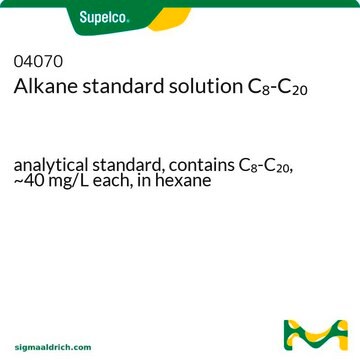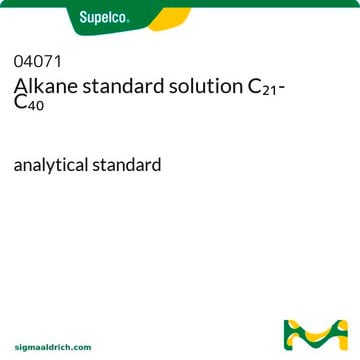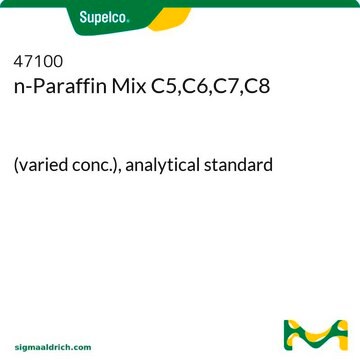40147-U
C8-C40 Alkanes Calibration Standard
in dichloromethane (varied)
About This Item
Produits recommandés
CofA (certificat d'analyse)
current certificate can be downloaded
Niveau de qualité
Conditionnement
pkg of 1 mL
Concentration
in dichloromethane (varied)
Technique(s)
HPLC: suitable
gas chromatography (GC): suitable
Application(s)
petroleum
Format
multi-component solution
Température de stockage
2-8°C
Application
Autres remarques
Analyte
Mention d'avertissement
Warning
Mentions de danger
Conseils de prudence
Classification des risques
Carc. 2 - Eye Irrit. 2 - Skin Irrit. 2 - STOT RE 2 - STOT SE 3
Organes cibles
Central nervous system, Peripheral nervous system,Central nervous system,Cardio-vascular system,Eyes
Code de la classe de stockage
6.1D - Non-combustible acute toxic Cat.3 / toxic hazardous materials or hazardous materials causing chronic effects
Classe de danger pour l'eau (WGK)
WGK 2
Point d'éclair (°F)
Not applicable
Point d'éclair (°C)
Not applicable
Choose from one of the most recent versions:
Déjà en possession de ce produit ?
Retrouvez la documentation relative aux produits que vous avez récemment achetés dans la Bibliothèque de documents.
Les clients ont également consulté
Notre équipe de scientifiques dispose d'une expérience dans tous les secteurs de la recherche, notamment en sciences de la vie, science des matériaux, synthèse chimique, chromatographie, analyse et dans de nombreux autres domaines..
Contacter notre Service technique







